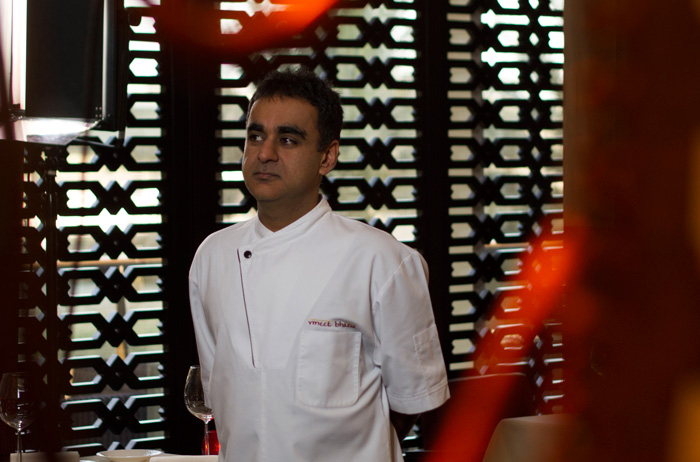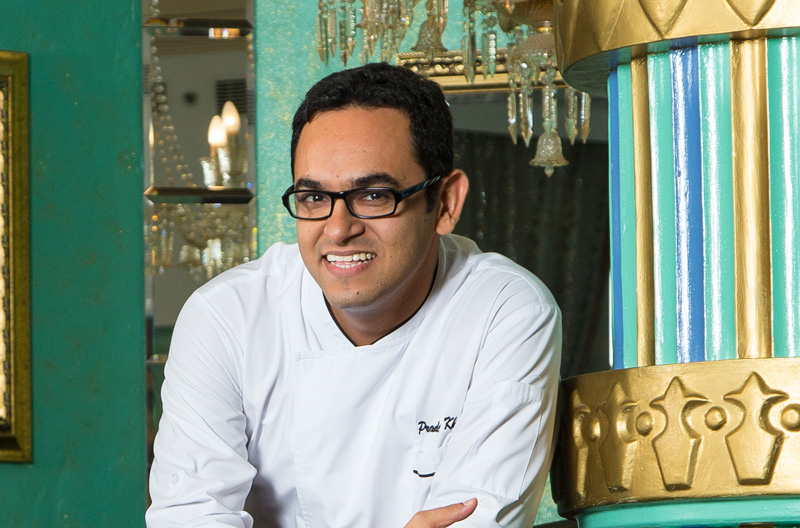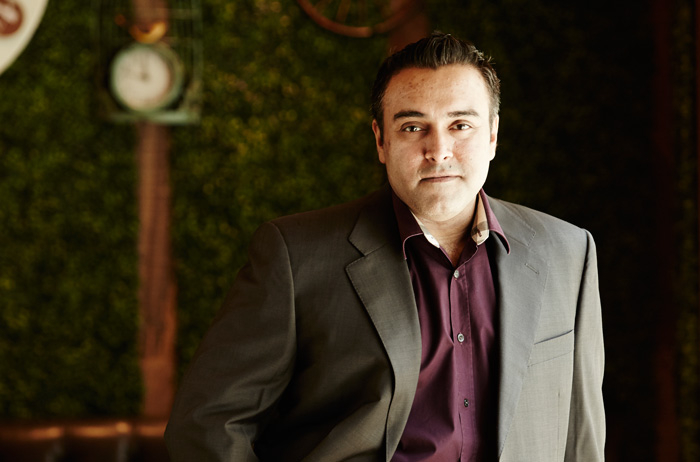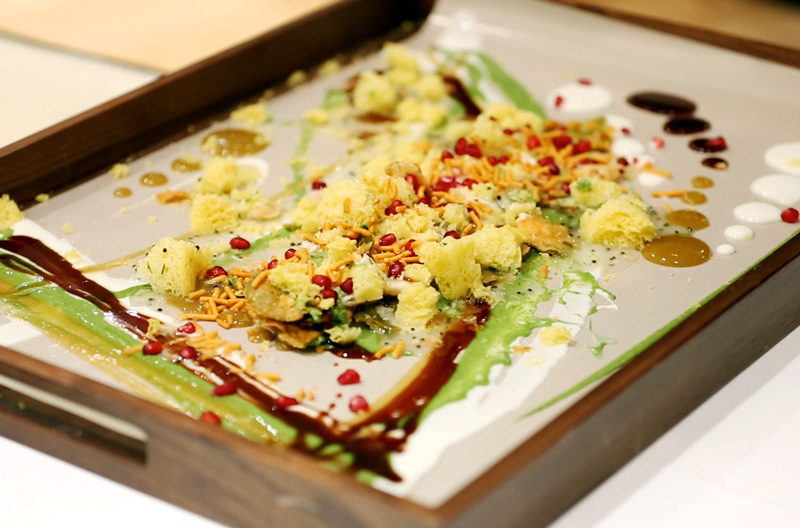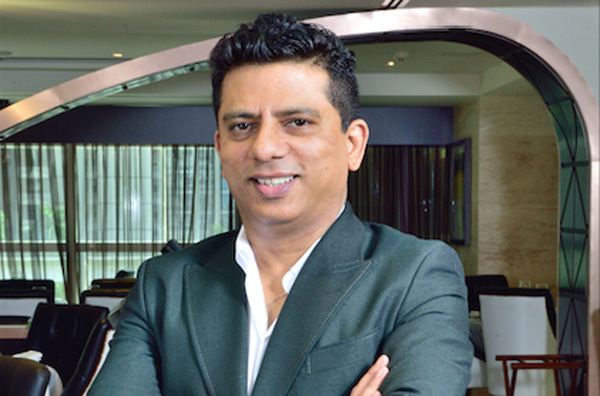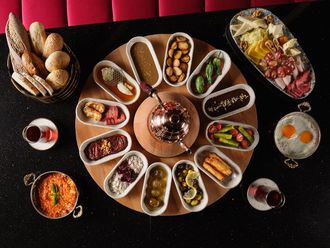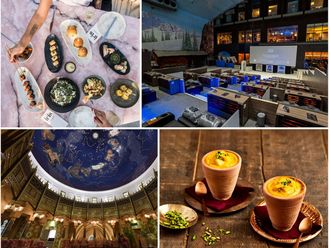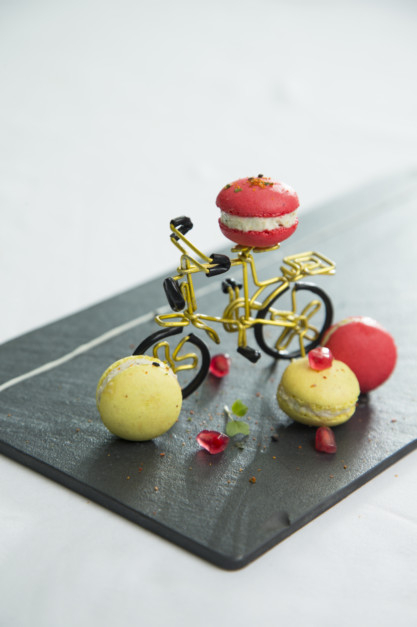
A tiny savoury macaron that transports you to Mumbai’s streets the instant you bite into it as you try to work out the different flavours jostling for attention. Rich mushroom consommé masquerading as tea, complete with dehydrated Himalayan morel “tea leaves” and powdered truffle oil standing in for the sugar — is it soup or is it tea? Rice and dal, balled up, rolled in crushed papads and deep-fried: khichdi arancini, anyone?
These dramatic variations may not all sound Indian, but the proof of the pudding, as they say, is in the eating — all chime with the cuisine’s flavour profile and all are being served at Indian restaurants across the UAE.
“Some level of theatrics is good for the bottom line,” says Zorawar Kalra, the restaurateur behind Farzi Café, the city’s newest Indian eatery. “People like seeing new things and eating new things.”
Gastronomic entertainment
Perhaps that explains the boom in fine dining Indian restaurants. These aren’t your standard curry houses, dishing up biryani, butter chicken and dal makhani to ravenous late-night revellers eager to fill a hole in their stomachs on a spicy but budget adventure. With their white tablecloths, tableside service and elaborate liquid nitrogen libations, these veritable temples to food have made it their business to entertain while you, of course, pay handsomely for the pleasure.
Not that price matters. Diners in Dubai can’t seem to get enough. Whether you want to call it molecular gastronomy, postmodern Indian food or fusion, the restaurants dishing up this new cuisine are bustling all through the week. Farzi Café at City Walk requires you to book at least a week in advance. Weekend tables at Tresind, at the Nassima Royal hotel on Shaikh Zayed Road, are hard to come by and insiders recommend the lunch deal for value and wow factor. You might score a table at Jodhpur, over at the Al Murooj Rotana — but the unassuming name and the venue’s associations with previous brands may prompt other diners in your group to suggest one of the former restaurants, unless they’ve heard of chef Pradeep Khullar and are familiar with Delhi’s Indian Accent, where he and several other Dubai chefs earned their stripes.
“Never mind — there’s potential for a lot more,” says Vineet Bhatia, the first to put modern Indian food on the global map with Rasoi, his now-shuttered London restaurant.
If you’ve ever eaten a chocolate samosa, well, he invented them. As well as the gulab jamun cheesecake. He earned a Michelin star for his efforts, and opened Indego at Grosvenor House Dubai in 2005, followed by a string of venues across Europe and the Middle East, including Doha, Riyadh and Geneva, and in Mauritius.
“The more restaurants open up, the better it is for everybody,” he tells GN Focus in between courses on a Sunday night in May at Indego.
Every table in the house is taken and some have been turned once already.
A global slowdown and difficulty in finding talent notwithstanding, the past year has seen half a dozen new luxury Indian restaurants open — or planned — in Dubai alone. Each requires an investment upwards of $1 million (about Dh3.67 million), according to Rajesh Lilaramani who owns Jodhpur, while Kalra says they can take anywhere from 18 to 24 months to break even.
Diverse diners
Bhupender Nath, who opened Tresind after years in the frozen foods business, will launch his second venture at the Dubai International Financial Centre on September 3. Carnival by Tresind will also be helmed by Himanshu Saini, the twenty-something chef who’s made the Shaikh Zayed Road venue such a success with Emiratis and Indian expatriates.
Location may have an effect on clientele, and it’s hard to determine who’s eating at all these restaurants and paying the Dh700 per head each can easily average. Farzi Café is visibly popular with Emiratis possibly because it doesn’t serve alcohol, but also because of the Arabian touches on its menu (a hummus sampler comes with three different varieties and plenty of papads), but its “fine casual” approach and reasonable prices resonate with all markets.
Uptown, at Grosvenor House, it’s a different story. More than half of Bhatia’s diners are Western expatriates and tourists, with GCC nationals making up the second-largest category of visitors. Indians only account for about 12 per cent of his business, he says — although they are the UAE’s largest expat group. He says that percentage is increasing, however, as more Indians travel to Dubai and they become the top tourist source market.
Lilaramani targets everyone at Jodhpur, which sits close enough to attract both The Dubai Mall tourists and the DIFC bankers. With Carnival sitting less than a kilometre away, Nath’s hoping it will cut across demographics, he told GN Focus earlier this year. Like Bhatia, he believes there’s enough demand for upscale Indian food for yet another Indian restaurant. “Our customers are well-travelled, experienced diners with discerning tastes who wish to experiment and try a fresh take on Indian cuisine,” Nath says.
Changing culinary perceptions
Bhatia says the growth is in line with an expanding international palate. “Demand is rising internationally, we’re getting a lot of requests from North America and the Far East,” he says over the phone from London. “Taste buds have opened up a lot and what is served there is quite boring. Our food is flavourful but not fiery.”
Over his decades-long career, he’s bust several myths about Indian food — notably the one that every recipe calls for an inordinate amount of chillies.
“And it’s just the tip of the iceberg. So many more chefs are coming in now, such as Zorawar for example, each with their own ideas and techniques,” Bhatia adds. “The pan is huge but to be successful, you need to make a splash.”
Thankfully, that could mean the end of the tableside theatrics. In the age of Instagram, how many more chaat trolleys can you scroll through?
Indeed, across the sea, though, the trend for liquid nitrogen appears to have been quickly digested. At top restaurants in India it’s now seen as too mainstream, and the focus has returned in equal part, to classic dishes and ingredients.
Ananta at the Oberoi Dubai, for instance, has already returned to its roots. When it opened in 2013, the restaurant offered both traditional and contemporary menus, featuring items such as spiced foie gras seared in a banana leaf. Last year, they changed the menu again, to focus on recipes from India’s royal kitchens. At the time, restaurant staff said this was because diners wanted more authentic fare.
“When theatrics become gimmicks, that’s a problem,” says Kalra, adding that the cuisine has already taken a post-molecular turn.
Saini for his part claims to be helming the introduction of “postmodern Indian cuisine” at Carnival, although he has a microbiologist and a florist on his team. “It’s time to go further and do exciting new things,” he says.
The man to watch, though, will be Bhatia, who’s busy dreaming up new dishes for Rasoi’s successor. Whatever he does is sure to be copied by everyone else in the business.


